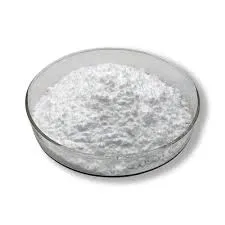
নভে. . 18, 2024 04:06 Back to list
hydroxyethyl cellulose manufacturing process
The Manufacturing Process of Hydroxyethyl Cellulose
Hydroxyethyl cellulose (HEC) is a water-soluble polymer derived from cellulose, primarily used in various industries such as pharmaceuticals, cosmetics, food, and construction. Its unique properties, including thickening, emulsifying, and binding capabilities, make it highly versatile. Understanding the manufacturing process of hydroxyethyl cellulose can provide insights into its applications and benefits.
The production of hydroxyethyl cellulose begins with the extraction of cellulose from natural sources, predominantly wood pulp or cotton. The cellulose is then purified to remove any contaminants, yielding a high-quality fibrous material. This is crucial as impurities can affect the final product's performance.
Once purified, the cellulose undergoes a process called etherification. In this step, the cellulose is treated with ethylene oxide in the presence of a strong alkaline agent, typically sodium hydroxide. The alkaline condition helps to swell the cellulose fibers, allowing ethylene oxide to easily penetrate and react with the hydroxyl groups present in the cellulose structure. This reaction replaces some of the hydroxyl (–OH) groups with hydroxyethyl (–O-CH2-CH2-OH) groups, thereby transforming the cellulose into hydroxyethyl cellulose.
The etherification process is finely controlled to ensure that the degree of substitution—the number of hydroxyethyl groups attached to each glucose unit in the cellulose polymer—is optimized. This affects the solubility and viscosity of the final product. Typically, the degree of substitution is maintained between 0.5 and 2.5, with higher values resulting in a more water-soluble product.
hydroxyethyl cellulose manufacturing process

After completing the etherification reaction, the resulting hydroxyethyl cellulose is neutralized to stop the reaction. This is usually achieved by treating the mixture with acid to remove any residual alkaline components. The neutralized product is then washed thoroughly to eliminate any unreacted chemicals and by-products, ensuring the final product meets strict purity standards.
The purified hydroxyethyl cellulose is then dried to achieve the desired moisture content. This drying process can be carried out using various methods, including spray drying, freeze-drying, or vacuum drying, depending on the desired properties of the final product. The choice of drying technique influences not only the physical state of the hydroxyethyl cellulose but also its flowability and solubility characteristics.
Once dried, hydroxyethyl cellulose is milled into a fine powder to facilitate handling and incorporation into formulations. The final product is packaged in moisture-proof containers to prevent absorption of humidity, which could compromise its texture and performance.
Hydroxyethyl cellulose is available in various grades, each tailored for specific applications. For example, pharmaceutical grades are manufactured under stringent regulations to ensure they are suitable for human consumption, while industrial grades can tolerate higher levels of impurities. Additionally, HEC is often modified further with other chemical agents to enhance its properties, making it applicable in a wider range of products.
In conclusion, the manufacturing process of hydroxyethyl cellulose is a complex yet fascinating journey that transforms natural cellulose into a highly functional polymer. Through careful control of the etherification reaction and subsequent purification steps, manufacturers can produce HEC with tailored properties suitable for diverse applications. Its solubility, thickening ability, and stability under varying conditions make hydroxyethyl cellulose an indispensable ingredient across multiple industries, contributing significantly to the enhancement of product performance and consumer satisfaction. As demand for sustainable and eco-friendly materials continues to rise, hydroxyethyl cellulose stands out as a valuable polymer derived from renewable resources, highlighting the importance of innovative manufacturing processes in today's world.
-
Versatile Hpmc Uses in Different Industries
NewsJun.19,2025
-
Redispersible Powder's Role in Enhancing Durability of Construction Products
NewsJun.19,2025
-
Hydroxyethyl Cellulose Applications Driving Green Industrial Processes
NewsJun.19,2025
-
Exploring Different Redispersible Polymer Powder
NewsJun.19,2025
-
Choosing the Right Mortar Bonding Agent
NewsJun.19,2025
-
Applications and Significance of China Hpmc in Modern Industries
NewsJun.19,2025







